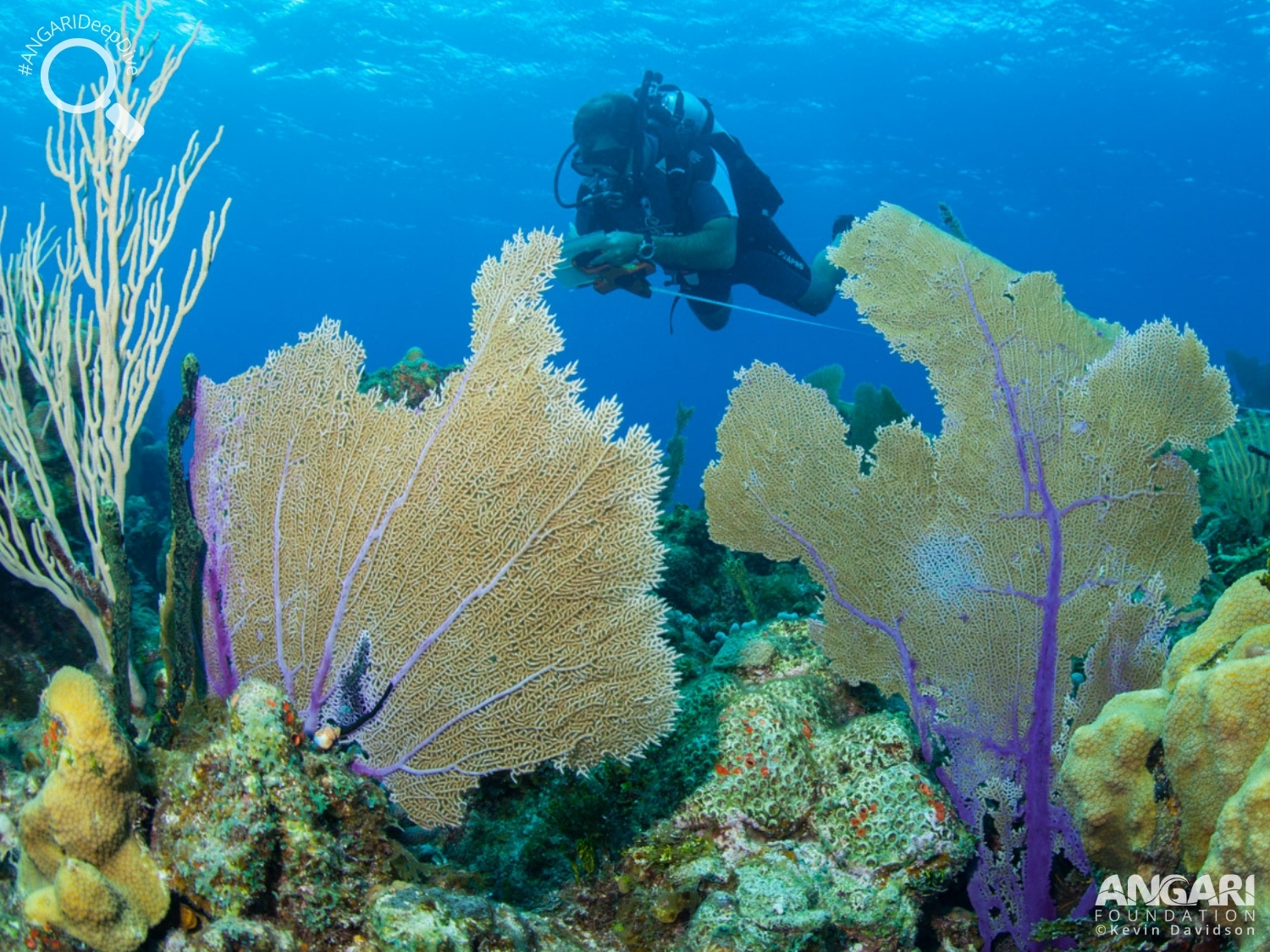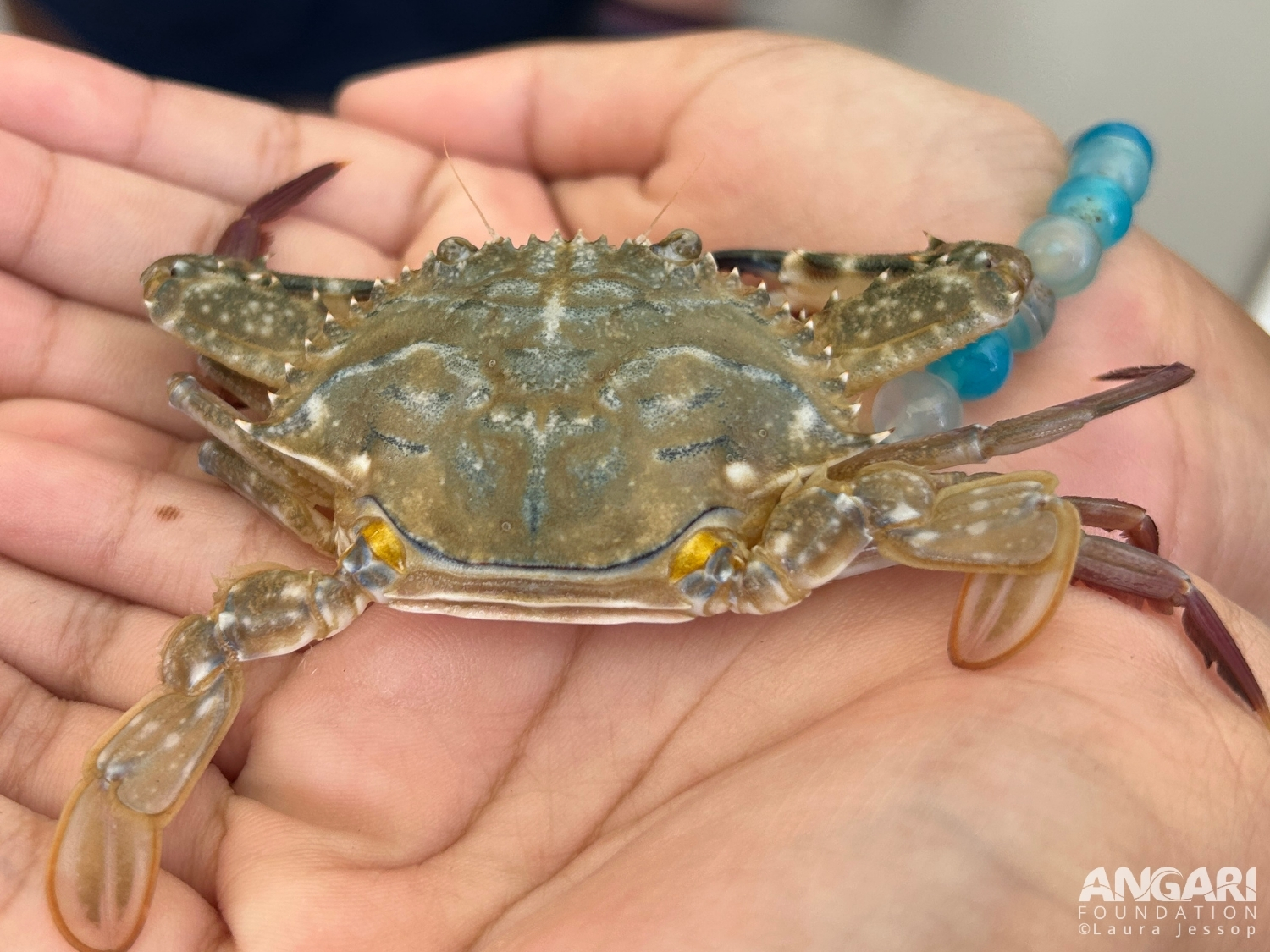Common sea fans are commonly found on coral reefs and can be identified by their purple tissue.
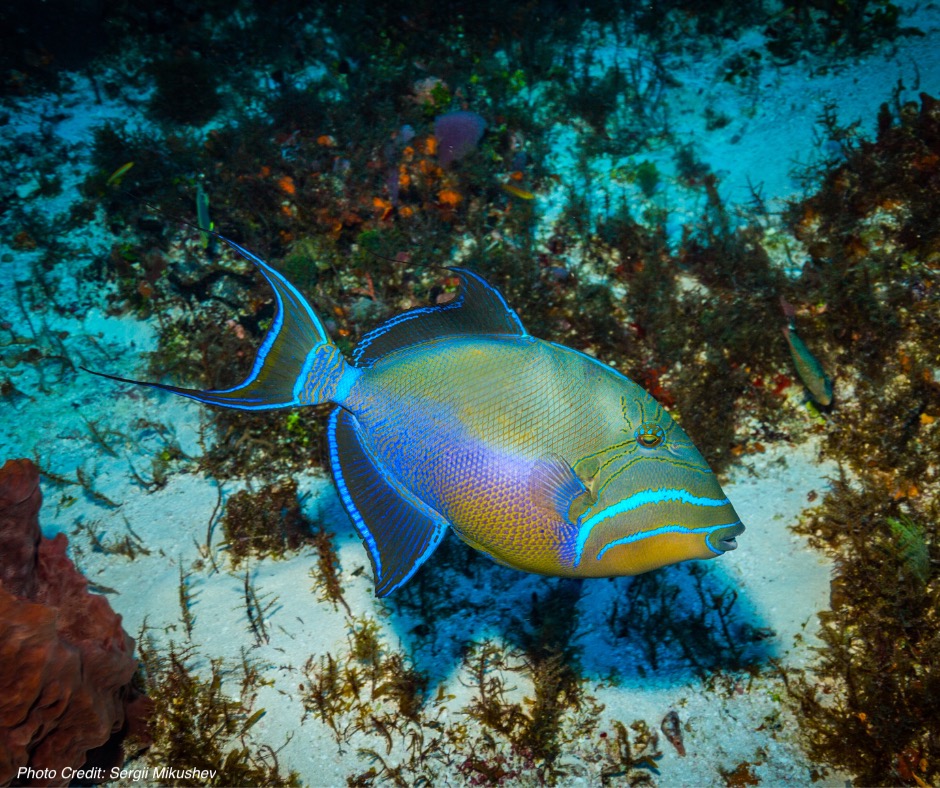
Queen Triggerfish (Balistes vetula)
The queen triggerfish (Balistes vetula) is a species of triggerfish that is commonly seen on rocky sea floors or coral reefs in the western Atlantic and Gulf of Mexico. They have two very distinct blue bands that run across their snouts, which make them identifiable from other triggerfish. However, if you see one, don’t get too close as they can be territorial and are known to give a nasty bite.
Dive into more fun facts about the queen triggerfish below.
#1: Queen triggerfish don’t always need company.
Queen triggerfish are a species of fish that can be found in schools, but they’re also very happy as a solitary fish.
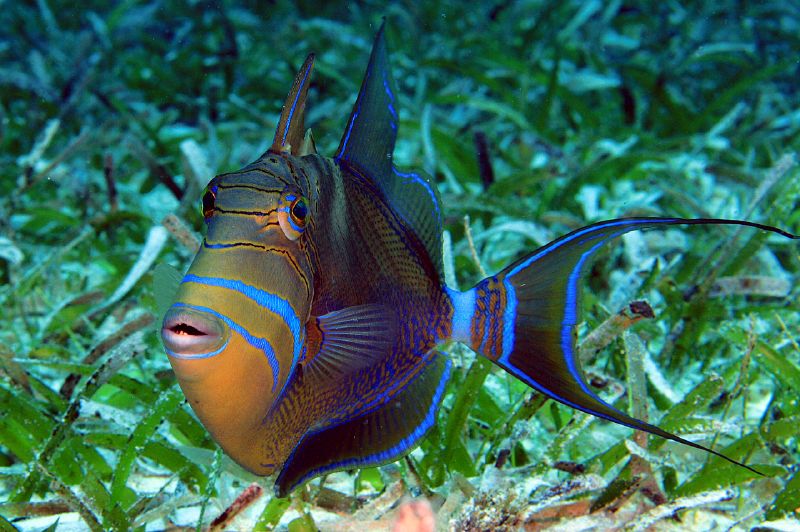
#2: Those large teeth are key for the queen triggerfish.
The queen triggerfish have noticeably large teeth at the front on their mouth. They use these larger teeth to break into and eat hard-shelled prey.
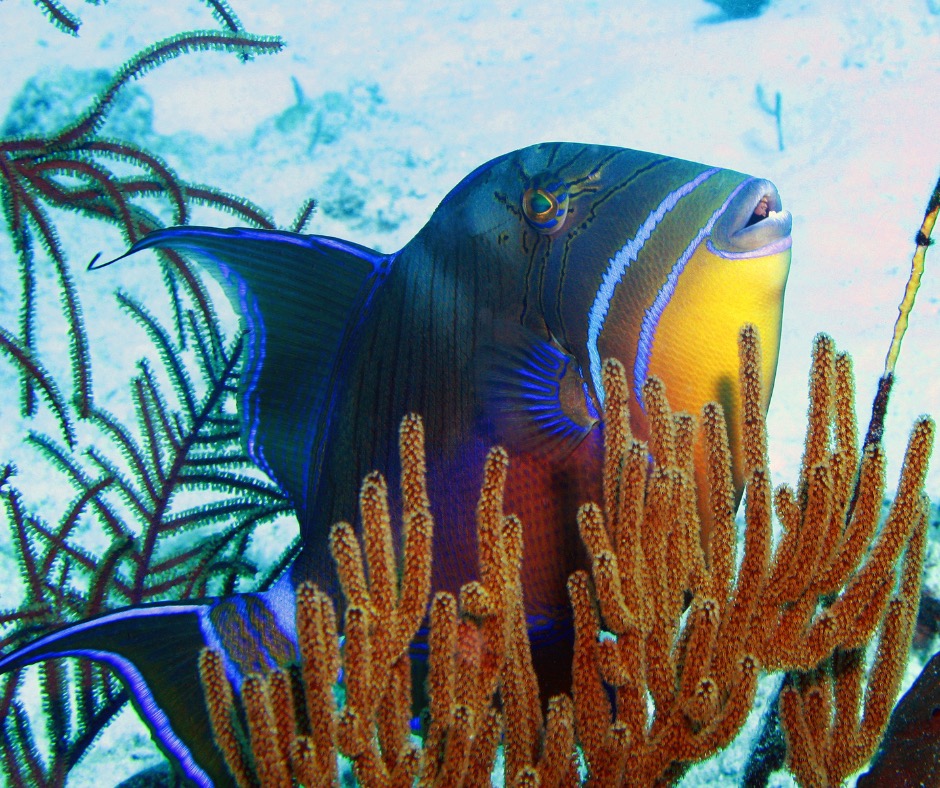
#3: The queen triggerfish isn’t just a pretty face, though we think that too.
One technique the queen triggerfish uses to catch prey is creating water movement with its fins. These movements are strong enough to overturn sea urchins, exposing their soft undersides and making them easier to eat.

#4: What does the queen triggerfish do to warn off others?
Queen triggerfish have the ability to send an audible warning to other fish. They use a special membrane behind their pectoral fins to create a throbbing sound.

#5: Queen triggerfish lock it down.
When a queen triggerfish feels threatened, it will retreat and hide in crevices. Once securely in a crevice, they lock their dorsal fin in place, so they can’t easily be pulled out by a predator. These fish also sleep in the crevices to ensure they are protected at night.
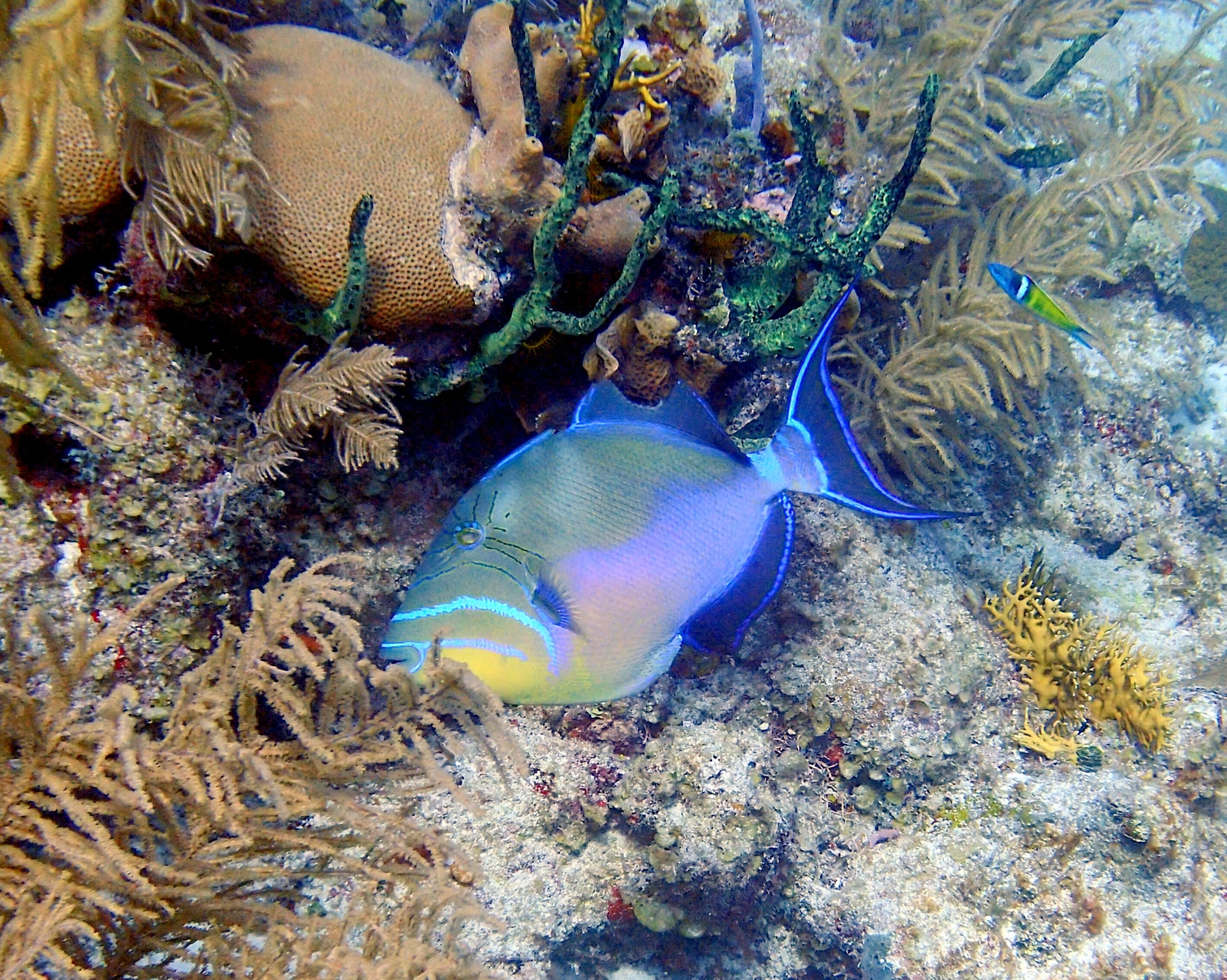
#6: What are the predators of the queen triggerfish?
Though the queen triggerfish is one of the larger reef fish, they still have predators. Common predators include larger reef fish, like groupers, jacks and sharks. Humans also eat triggerfish!
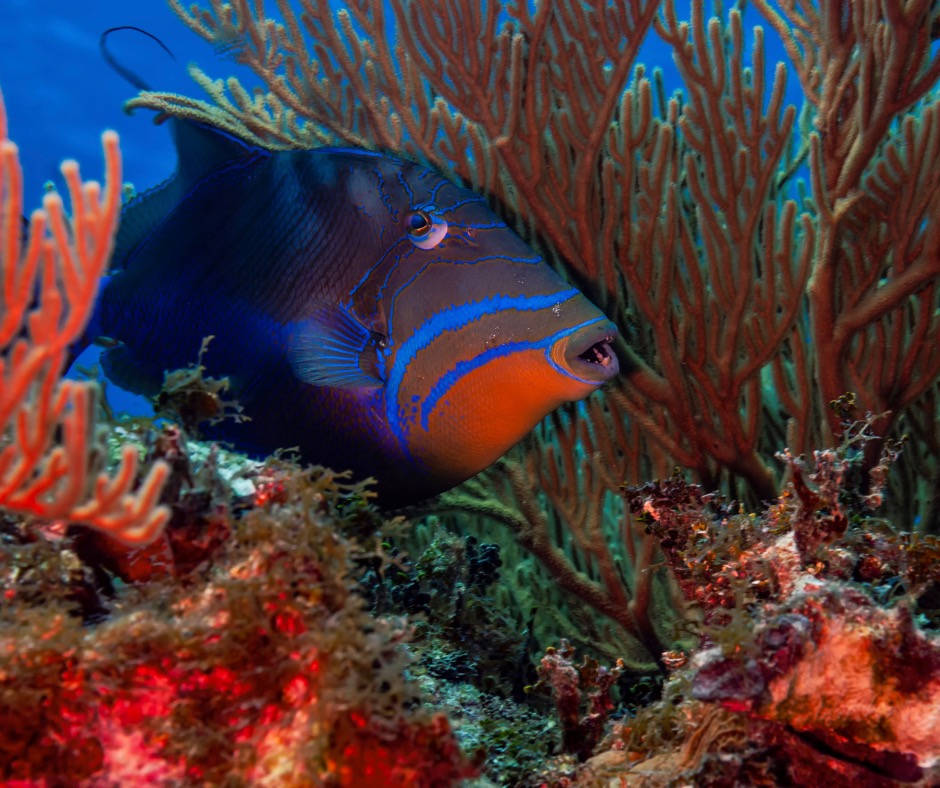
#7: Queen triggerfish contribute to medicine!
In some parts of Brazil, it is believed that the queen triggerfish have medicinal properties and are used in traditional medicines. The scales, liver and skin can all be prepared in different ways to create medicines that are used to treat illnesses such as earaches, asthma and more.
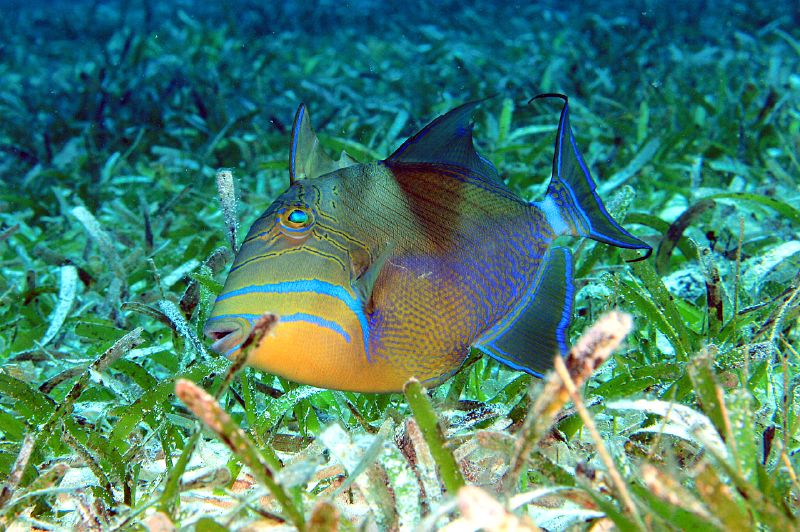
#8: Queen triggerfish make unique nests.
A queen triggerfish nest looks like a bowl dug into the sand on the seafloor. They make their nests by blowing water into the sand to create the bowl shape.

#9: Queen triggerfish give a nasty bite!
Queen triggerfish parents defend their nest fiercely, so don’t get too close if you don’t want to get bitten!
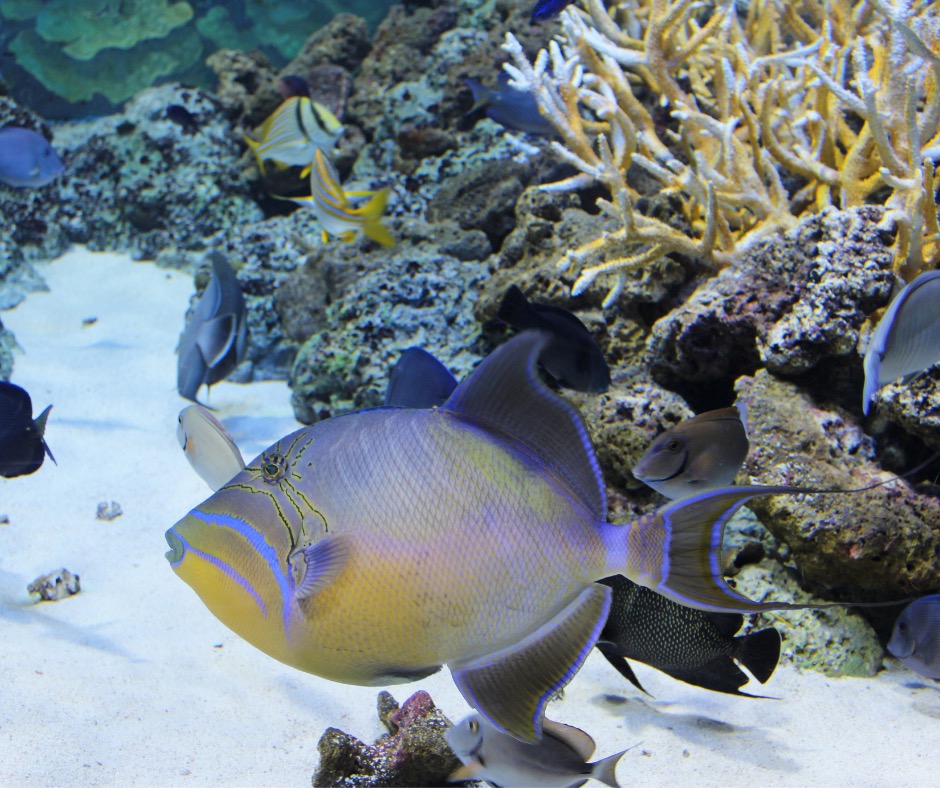
According to the IUCN, the queen triggerfish is considered a vulnerable species. Being harvested for medicinal purposes and the aquarium industry has meant that their populations have been decreasing. It would be a shame to lose these beautiful fish from our reefs.
Additional Queen Triggerfish Resources:
1. Balistes vetula – Florida Museum
2. Balistes vetula (Queen Triggerfish) – The Online Guide to the Animals of Trinidad and Tobago
3. Independent Survey Data Improves Management of Caribbean Queen Triggerfish – NOAA, coral reef restoration program

